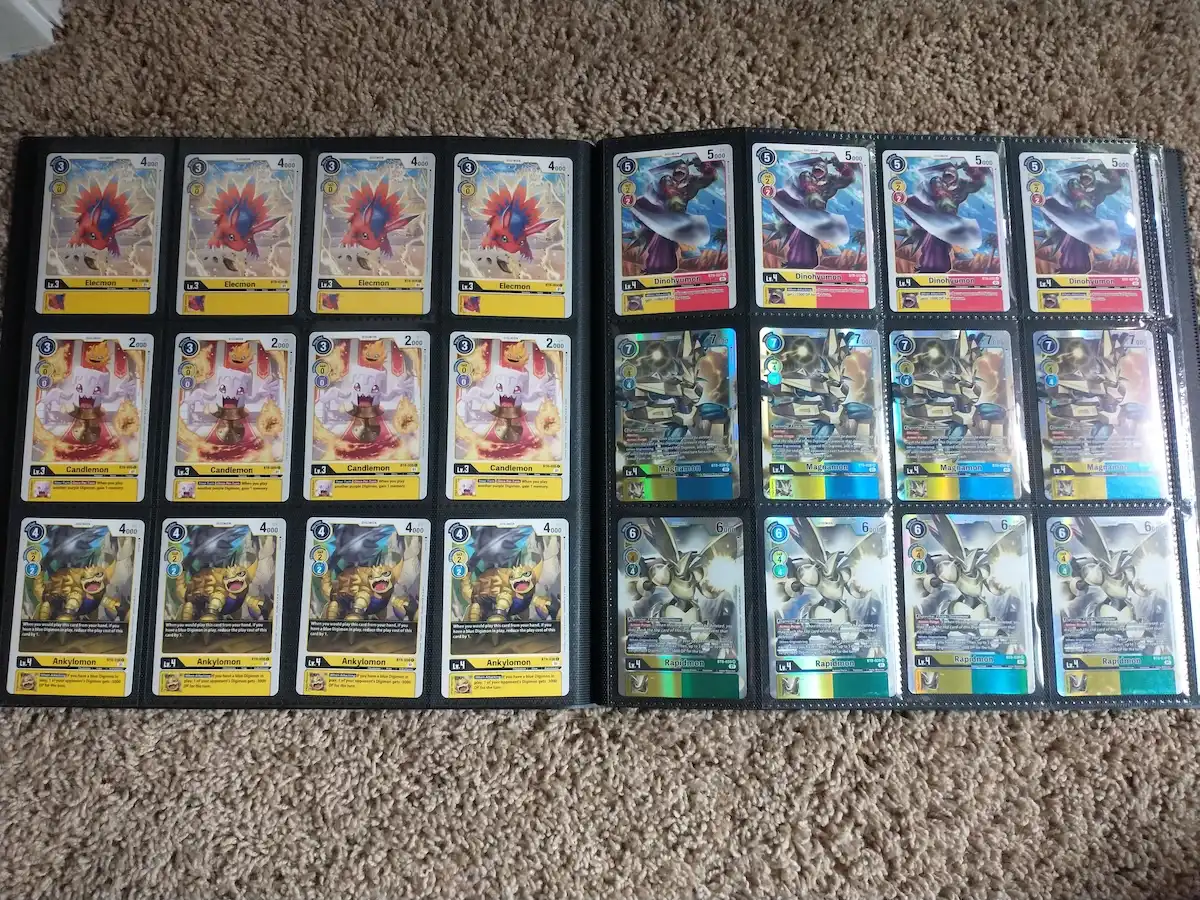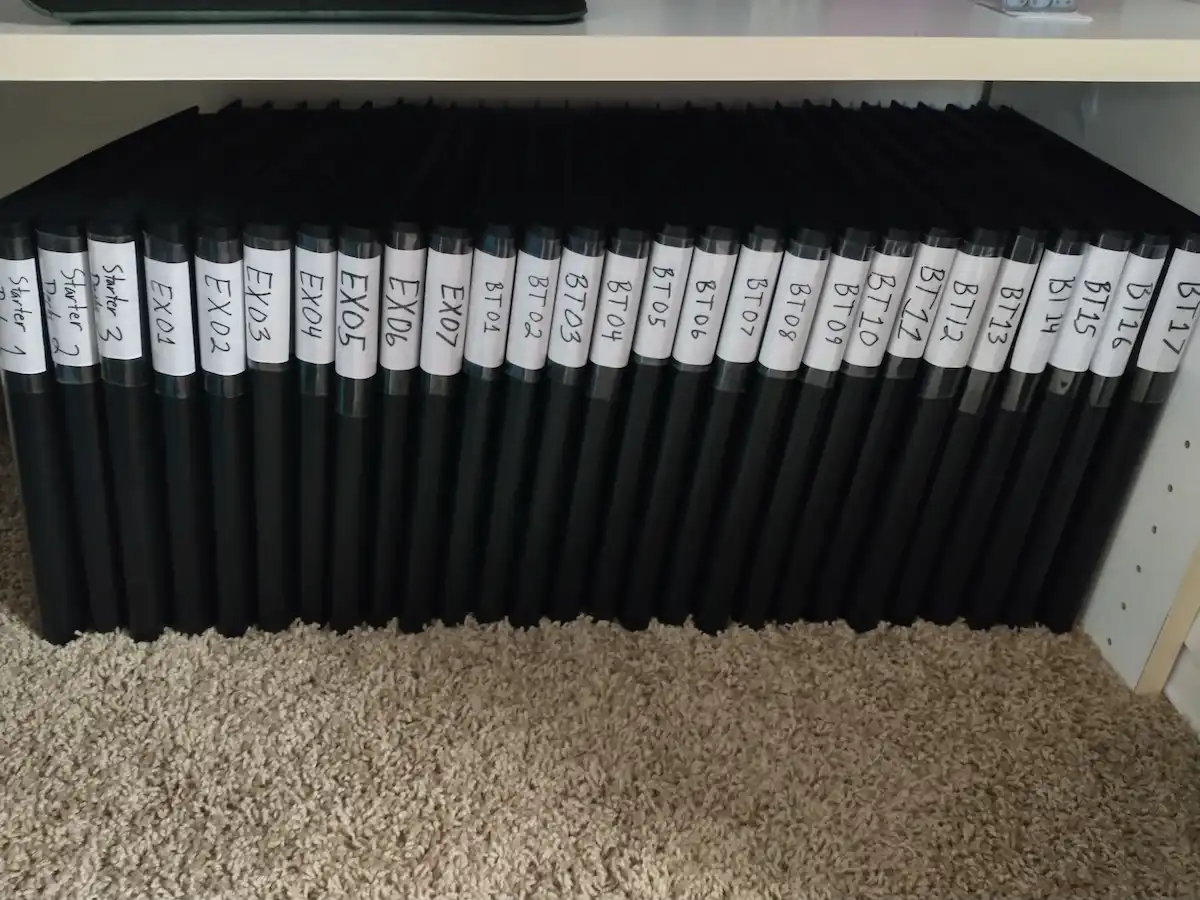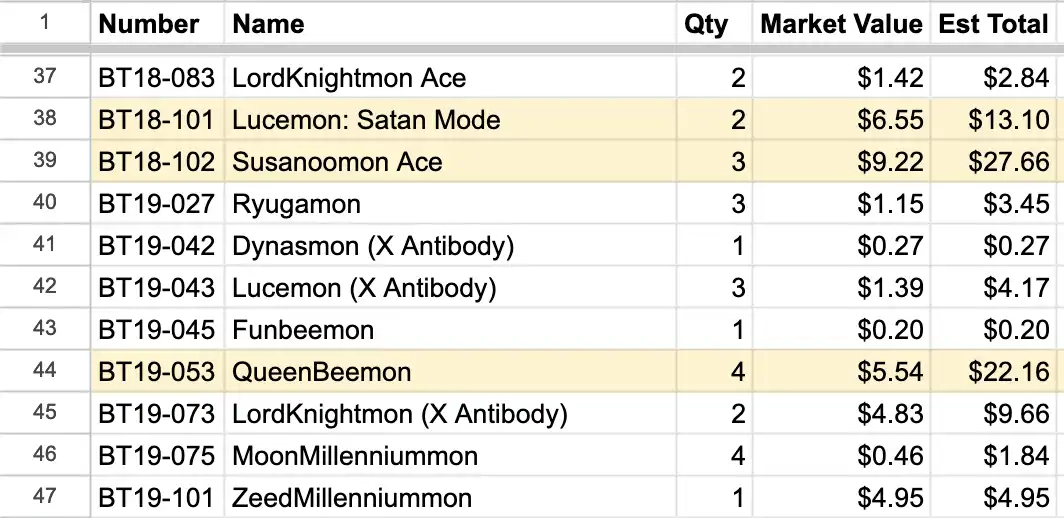Back on July 5, 2022, I had the urge to play a different trading card some: something new but nostalgic. I’d been playing Magic: The Gathering since high school and wanted to things up and experience something unfamiliar. I came up with a simple idea: I’ll run to target and pick up a couple Yu-Gi-Oh starter decks! I vaguely remember playing Yu-Gi-Oh back in elementary school but had no idea what the game is like today. However, my local Target only had one starter deck in stock.
Feeling frustrated, I glanced over to left. There I saw two different starter decks (ST9 and ST10) for a completely separate and unexpected card game: Digimon. I didn’t even realize that Digimon had a modern card game. I remember them having one back when I was young but I never actually played it. The Digimon anime was always pretty awesome, though (as a kid, at least). I thought “Why not?”, and bought those two Digimon decks while having no awareness of the path I’d started myself down.
That summer was spent with my friends, learning the rules of this new card game. I bought a few booster boxes of older sets and found myself with an urge… to collect. The fun started with a single spreadsheet: tracking what sets had been released up until that point. I noted the current market value of each box and included links of where to find them. At some point, I decided that I wanted to collect a playset (four copies) of each card. That way, I’d always be able to brew and play any deck I wanted!
Fast forward to today and I’m still collecting. My friends and I don’t play the game very often, sadly. The local scene here in central Iowa is also somewhat slow and uneventful. Nevertheless, I’m still locked in to the market and hammering spreadsheets (let the heavy hitters know). This post oulines what my collection process looks like today: from the binders I use to opening singles on mail day. Let’s start with the binders!
Binders Link to heading
I store my collection in identical, matte-black 4x3 binders made by vaultx. They hold 120 rows of four cards (for a total of 480) per binder. Since I’m building a “playset” collection, these binders are great because they can fit all four copies of each card in a single row. Therefore, each binder can hold up to 120 different cards. Digimon sets range in size from ~72 to ~115 cards, with the average being around 102. This means that my playset of every card in a set always fits into a single binder.

The binders are labeled by set and stored vertically. They get quite heavy so I store them under a shelf (for now). I do want to obtain a sturdier shelf and print out some nicer labels someday.

Alternate Arts Link to heading
I also have a second, nicer binder for storing alternate art (rare) cards that overflow beyond my baseline four copies. This binder came from the Premium Bandai Beelzemon Binder Set and is quite well made. It’s no longer available for purchase directly from Bandai, unfortunately, but you could probably find it from a reseller for a slightly higher price.

Sealed Product Link to heading
Bandai releases (on average) two main sets and one extra set per year. I typically order two booster boxes of each set. For the larger, “three into two” sets (which Bandai has done twice), I order three boxes of each. Usually, I pre-order the boxes through GameNerdz since they are an awesome distributor! Sometimes, however, supply and demand cause them to sell out before a set releases and even for weeks after. In that case, I’ll find a backup seller on TCGplayer and order my boxes there.
Opening Packs Link to heading
This is the second fun part (after the spreadsheets): opening packs and slotting the cards into their respective binders. I usually open four to six packs at a time over the course of a few weeks (often during meetings). I like spacing out the cracking process to give me something to look forward to.
Tracking Missing Singles Link to heading
My second spreadsheet is for tracking missing singles. I include the card info, quantity, market value, and total estimated cost to backfill. Totals higher than $10 are yellow, higher than $50 are light red, and higher than $100 are dark red.

Bulk Ordering Link to heading
I order all of my missing singles (in batches) from TCGplayer. I try to optimize the cart to minimize the number of packages and prioritize trusted sellers. I wish the cart optimization process was more advanced and had even more settings. If TCGplayer had an active and extensive API, I’d try to write a better opimizer myself! I like to avoid single-card orders even if it means paying slightly more from a seller that is already in my cart. Often, the additional shipping of a single-card order outweighs the increase of the next-lowest price.
Tracking Orders Link to heading
Orders are tracked in my third (and final) spreadsheet. Orders that have been placed but are not yet shipped are colored red while shipped orders are colored yellow.

Mail Day Link to heading
The third fun part: mail day! I grab the mail, check what cards were received, and compare them against my “Orders” spreadsheet. Fun fact: I only care about checking the mail when I know cards are coming.

If something is amiss, I’ll double check the TCGplayer order and see if I messed up the order of if the seller made a mistake in what they sent. Thankfully, mistakes happen pretty infrequently. Some packages do get “lost in the mail”, though. When these mistakes happen, the cards that never arrived get moved back into the “Singles” spreadsheet and will be re-purchased in a future batch order. For complete, on-time orders, I always leave positive feedback on TCGplayer. I like to give credit to the responsible sellers!

Conclusion Link to heading
It’s pretty crazy to reflect and observe this whole process documented in one place. I developed it organically over the course of a few years. Despite the fuss, I like “solving” this uncertainty-oriented TCG with an intentional processe that converges on completion. Having a full playset of every card means that I’ll always be able to build each and every deck I can think of.
Now I just need the game to become more popular!